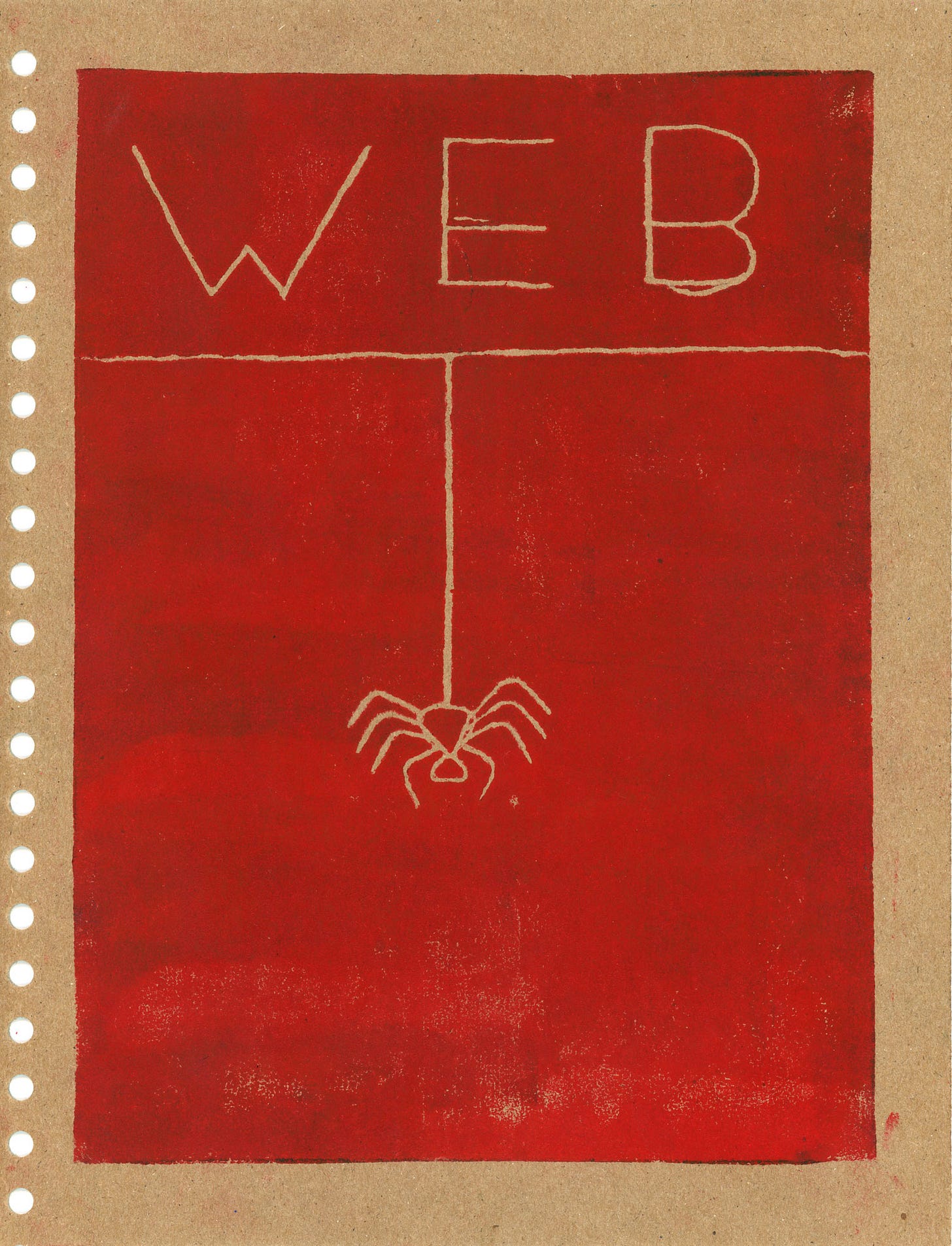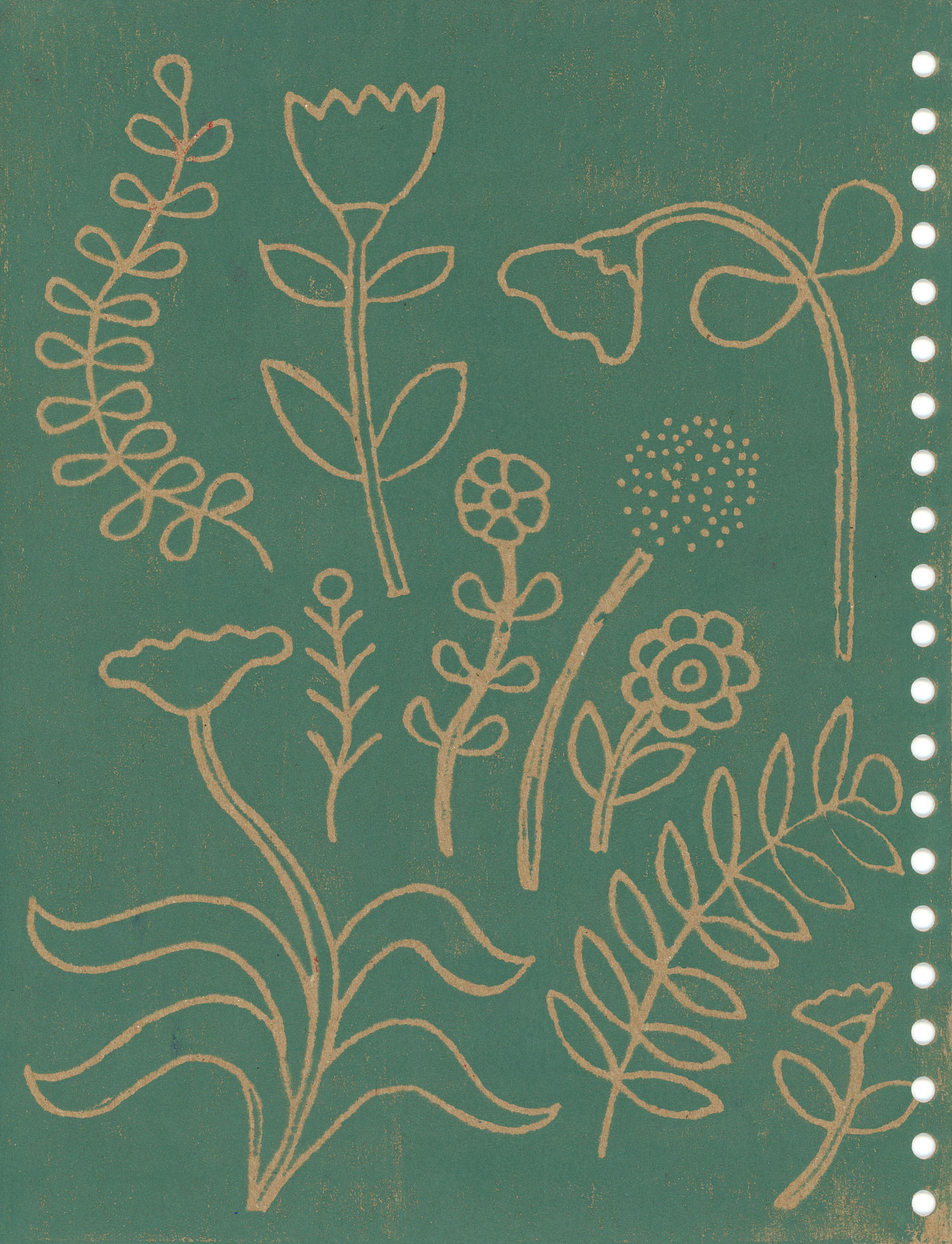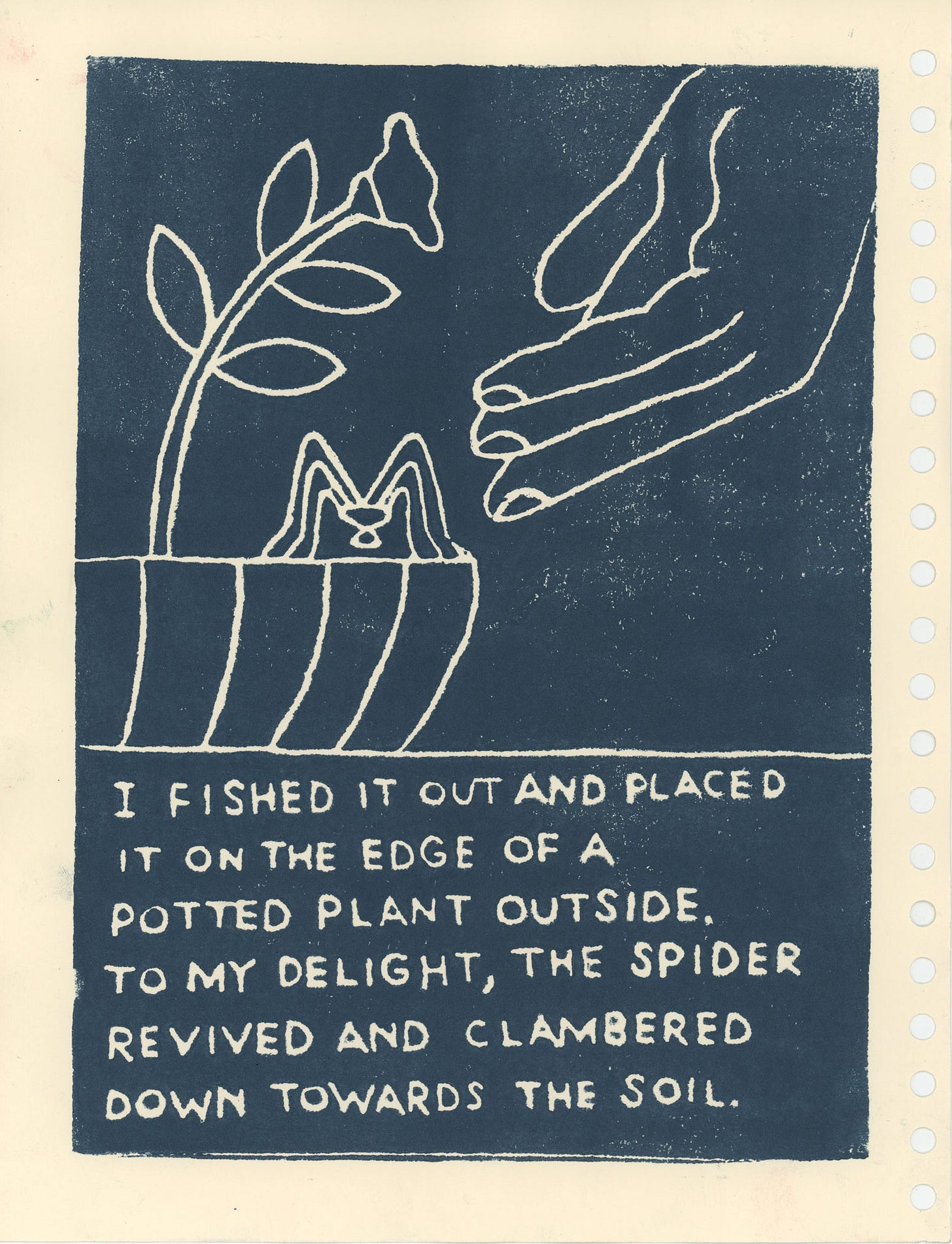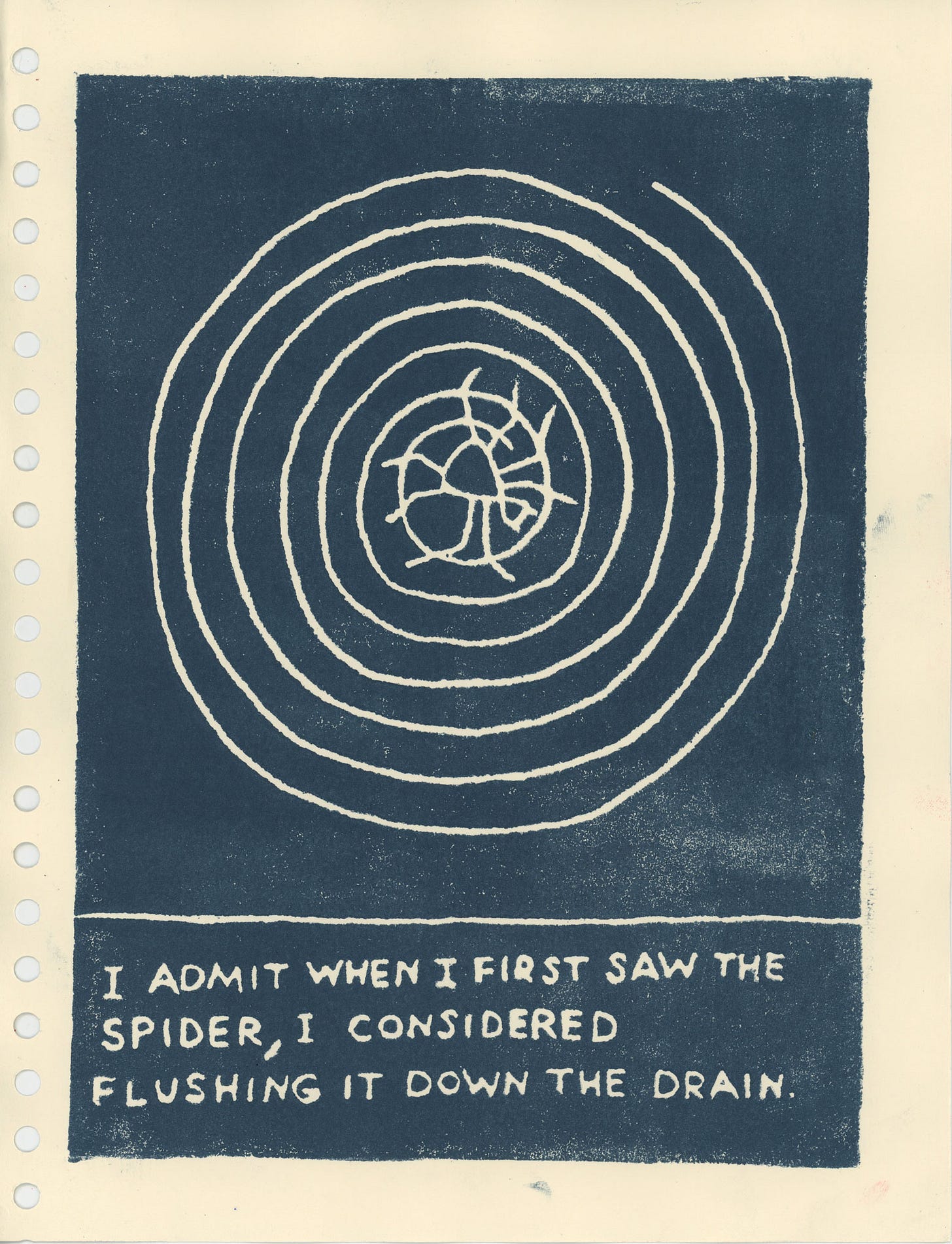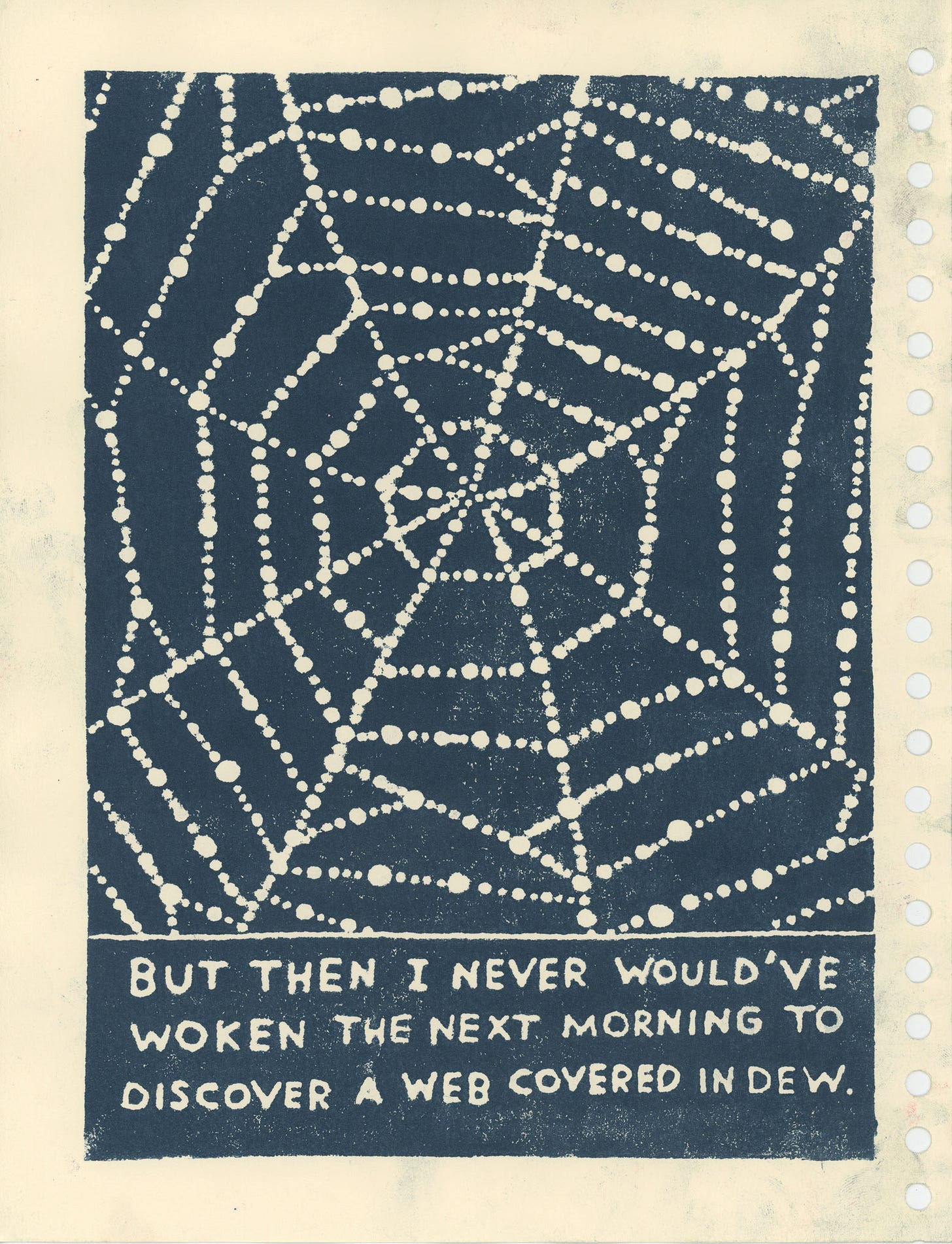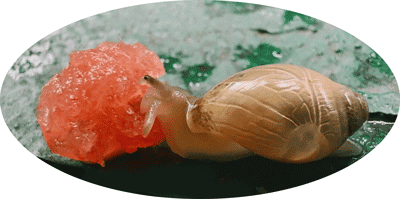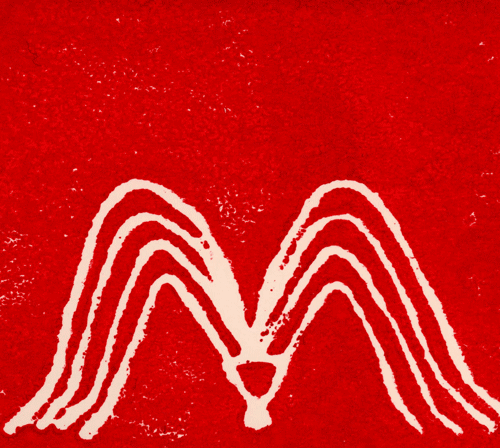Encounters with Little Creatures
Over the summer, I became obsessed with diaries. I read and loved Brian Eno’s A Year with Swollen Appendices (his 1995 diary), and David Sedaris’, Theft by Finding: Diaries (1977–2002). I decided I would keep a diary too. To make things simple, I limited myself to a single moment each day. After a couple weeks, I was surprised to discover that almost all of the entries were about my encounters with little creatures.
July 23 - We found a little snail drinking from a rain drop. We offered it a piece of cabbage and it wasn’t interested. Then we gave it a piece of watermelon, and it ate for a couple minutes—the feelers on the side of its head undulating. I accidentally crushed a snail last week so it felt good to help this one out.
July 24 – There’s a small pool of rainwater held within the roots of our neighbor’s magnolia tree. I pointed my phone’s flashlight into the murky water and discovered dozens of tiny, wriggling mosquito larvae.
July 25 – While driving to pick Wes up from school, I saw something move out of the corner of my eye—a large cockroach was crawling up the seat between my legs. I swerved over to the side of the road and jumped out of the car. I managed to swipe the roach onto the street, where it lay on its back, flailing. Then I stomped it. I felt a little bad. I could have let it go, but it nearly caused a wreck, so I didn’t feel that bad.
For a long time I’d wanted to make my own artist books. Time after time, I tried and failed to create ambitious handmade books. So this time, I limited myself to just four pages. While looking for micro-story ideas I came across my spider diary entry, and it worked perfectly in this abbreviated format.
Printing Process
I got the inspiration for this printing technique from the blog of an elementary school art teacher named Mrs. Knight. I like experimenting with kids’ crafts because the materials tend to be inexpensive and easy to clean. It also puts me in a playful mood, which often leads to better work.
This method requires block printing ink, a brayer, a baren (used for pressing down the paper), styrofoam sheets, and paper. Here’s what to do:
Draw your design onto a piece of printer paper.
Place the drawing over a styrofoam sheet and retrace the lines, pushing hard to indent the styrofoam.
Load up your brayer with ink and roll it over your styrofoam sheet—those deeply indented lines will remain un-inked.
Place a sheet of nicer paper over the inked styrofoam sheet and use the baren to apply pressure, ensuring that the ink transfers onto the paper.
Voila! Remove your paper and be amazed by your print.
It’s a fun process and fairly easy—Mrs. Knight teaches this to her fourth graders. If you’re interested I’d definitely encourage you to give it a go. The biggest problem for me was the styrofoam. I instantly regretted buying it. If I do this again I’ll look for more environmentally-friendly options.
So there you have it. I finally finished a little book. Maybe I’ll go all out next time and make a six-page book!
If you’ve been stuck on a project, my advice is this: just start. Go small.


